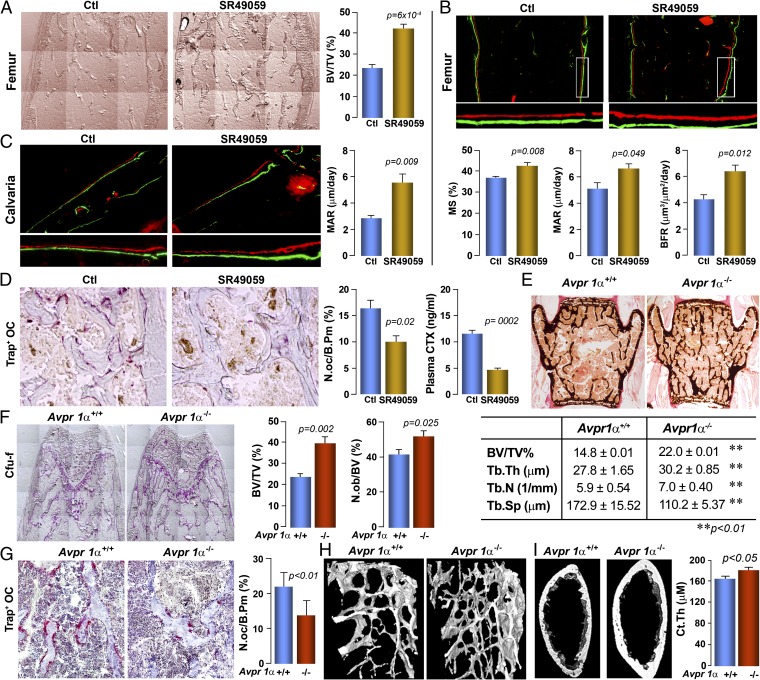Fig. 2.
Avprs regulate bone remodeling and bone mass. Pharmacologic inhibition of Avpr1α by the injection of the receptor antagonist SR49059 (or vehicle, Ctl) increases bone mass (unstained sections, quantitated as BV/TV) (A); bone formation (photomicrograph of xylenol/calcein-labeled bones), measured as mineralizing surface, MAR, and bone formation rate in femur epiphyseal bone (B), and MAR in calvarial bone (C); and bone resorption in TRAP-labeled sections measured as osteoclast surfaces (N.oc/B.Pm) and serum C- telopeptide (CTX, by ELISA) (D). Statistics: Unpaired Student t test, P values shown, n = 4–5 mice per group. Consistent with this, Avpr1α−/− mice compared with Avpr1α+/+ littermates (E) showed a profound increase in trabecular bone in the vertebral column (von Kossa stained section; BV/TV, Tb.Th, Tb.N., and Tb.Sp.) and in the femur epiphysis (alkaline phosphatase-stained section, BV/TV); this is accompanied by an increase and decrease, respectively, in Cfu-f and N.ob./BPm (F), and osteoclast numbers (Trap-stained surface, N.oc/B.Pm) (G). Microtomography (H) confirms the increase in bone mass in both trabecular [femur metaphysis and cortical bone (Ct.Th)] (I). Unpaired Student t test, P values shown, n = 5 mice per group. (Magnification: A–C and F, 10×; D, 40×; E, 2×; G, 20×; H, 4×.)

